MS70 Expirement Before and After 1950 MS Quarter: UPDATE after Acetone Dip pics. Final 2 pics. GRA
Ok this is a continuation of my original thread. Original Thread Discussion Its a before and after using MS70 on a 1950 Quarter in MS condition.
This quarter is by far in the worst condition out of 20 MS's of the same year so I'm using it to see how it affects the Water Marks or whatever marks they are, as well as how it will affect the luster.
I will be using the same camera settings and photoshop settings so that any changes you see will be soley from the application of the MS70 cleaner.
I'm posting the Before Pics now and probably will be posting the After pics in a few hours or mabey even tomorrow.
BEFORE. I know you've heard this before but the luster is so much better in hand.
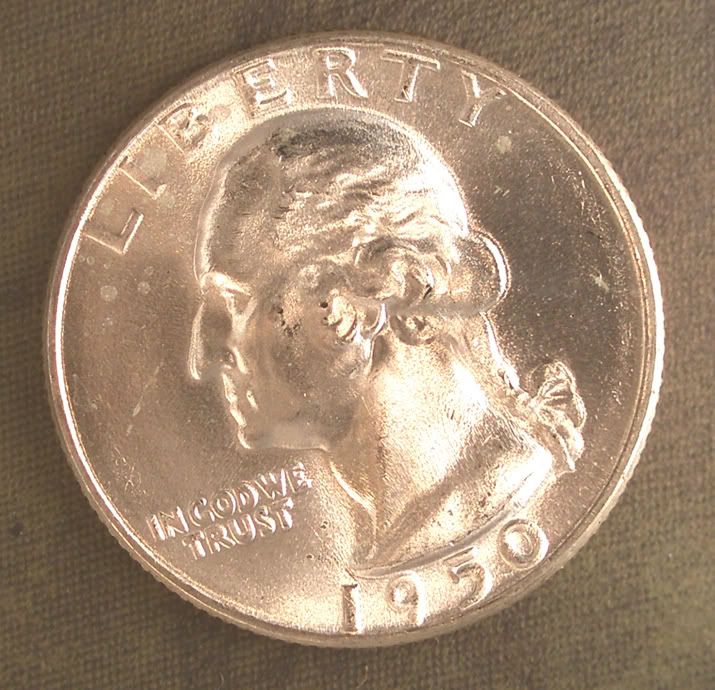
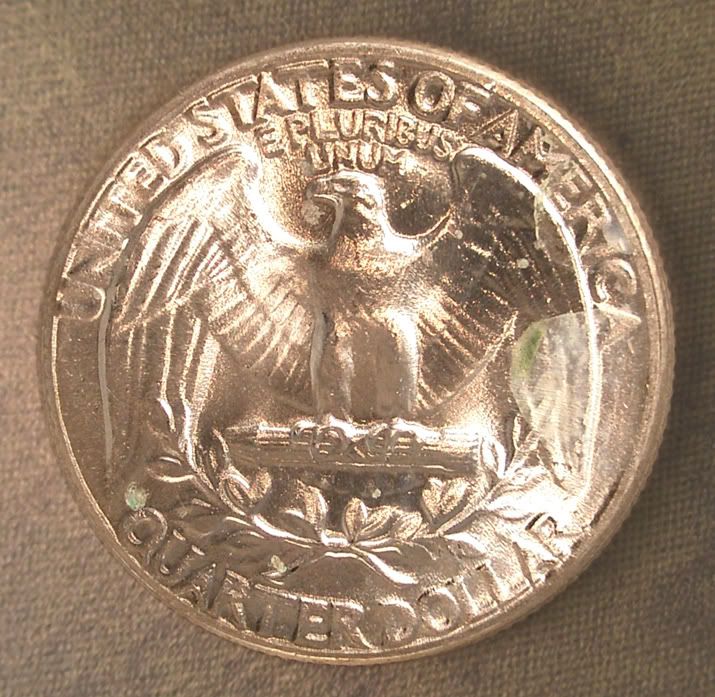
AFTER. The lighting that resulted on the reverse AFTER Pic is very close to true color of the actual coins. There was a large improvement on the reverse and some on the obverse but stll some of the liquid marks remain. Not sure how to get them off. Any suggestions would be great. Used MS70 followed by tap water rinse then distilled water rinse and repeated. Canned Air Dried. Again I believe this coin is the worst out of the 20 as far as roll marks, scuffs etc.
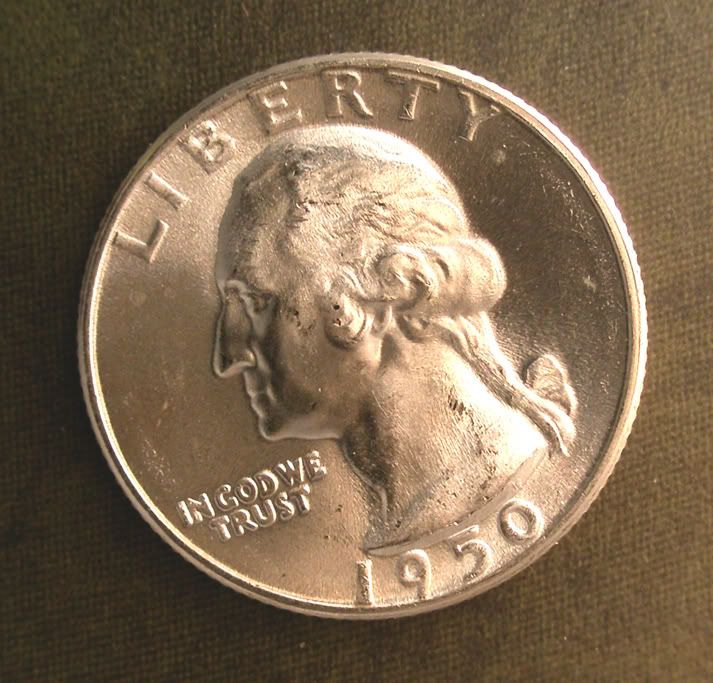
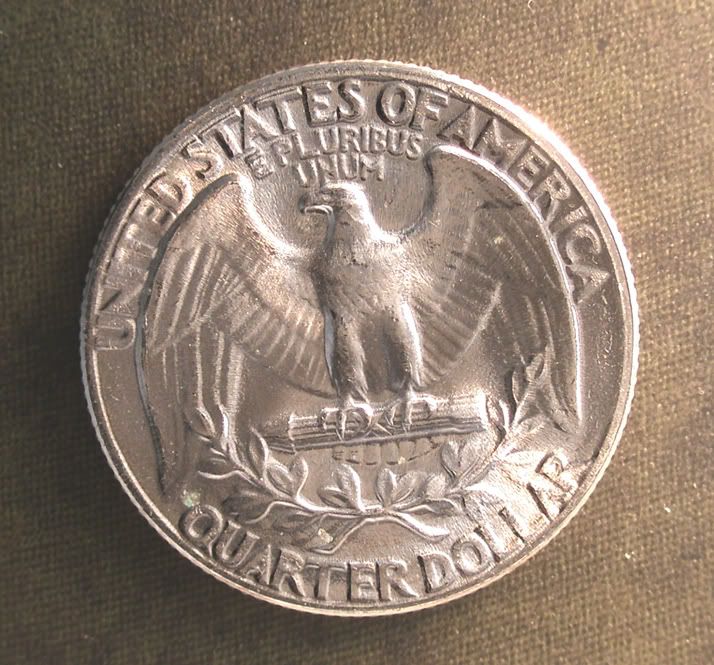
OK it is what it is now. This was the final step in the experiment. Each side was dipped in ACETONE for 10 minutes. Please comment on the final result and please GRADE.
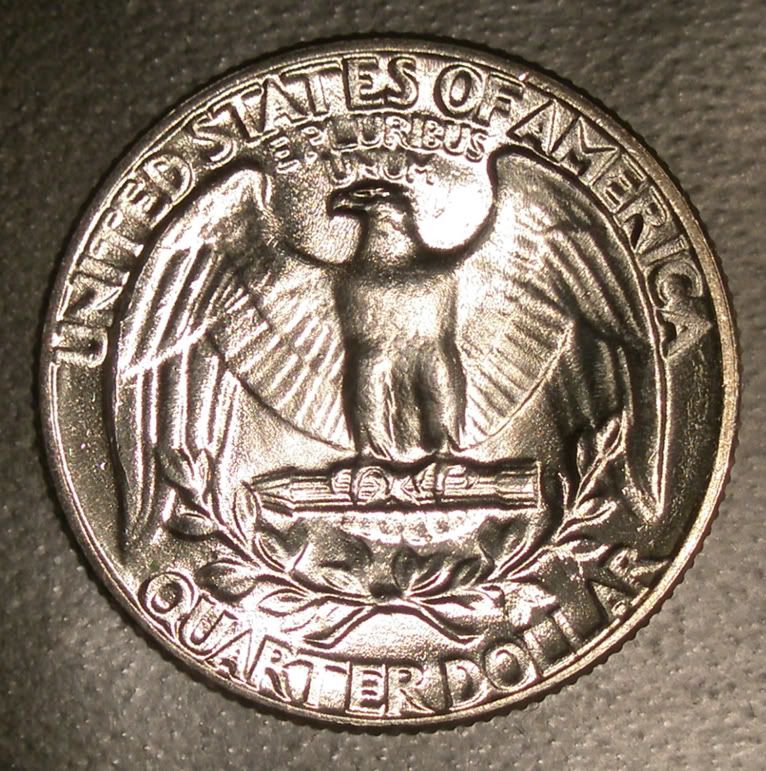
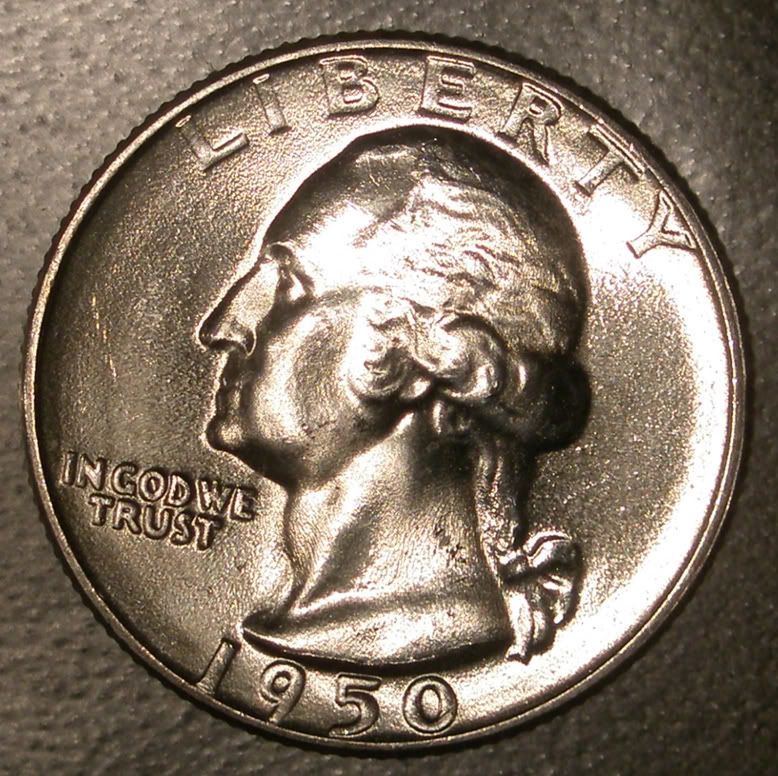
This quarter is by far in the worst condition out of 20 MS's of the same year so I'm using it to see how it affects the Water Marks or whatever marks they are, as well as how it will affect the luster.
I will be using the same camera settings and photoshop settings so that any changes you see will be soley from the application of the MS70 cleaner.
I'm posting the Before Pics now and probably will be posting the After pics in a few hours or mabey even tomorrow.
BEFORE. I know you've heard this before but the luster is so much better in hand.


AFTER. The lighting that resulted on the reverse AFTER Pic is very close to true color of the actual coins. There was a large improvement on the reverse and some on the obverse but stll some of the liquid marks remain. Not sure how to get them off. Any suggestions would be great. Used MS70 followed by tap water rinse then distilled water rinse and repeated. Canned Air Dried. Again I believe this coin is the worst out of the 20 as far as roll marks, scuffs etc.


OK it is what it is now. This was the final step in the experiment. Each side was dipped in ACETONE for 10 minutes. Please comment on the final result and please GRADE.


Before you learn how to win it is essential that you learn how to lose!
0
Comments
Good Luck in your quest!
The name is LEE!
<< <i>Had those water marks been on a Silver Eagle they'd have been called milk spots so I guess this isn;t anything new!
Good Luck in your quest! >>
Why do you say that? I'm actually not sure what the spots are. These came out of a BU unopened roll. I think it may have been in a flood or fire or something. So not exactly sure what the spots are.
<< <i>that is some sweet skin on that quarter...i don't think i'd be expreimenting on it...i'd find another >>
I have 20 of them like this and this is the worst case.
Did you use a Q-tip dipped with MS70 and roll the surface, let it sit for a second, then roll the surface again with the other end of the Q-tip dipped in MS70, then rinse?
Is the green spot on the Rev embedded into the coin?
Nice 25c btw.
-wes
Too many positive BST transactions with too many members to list.
<< <i>I would put some MS70 in a glass jar and soak those quarters until all the green was removed. >>
I've never dipped using MS70. Swabbed with a Q-tip, maybe. I thought MS70 was not for dipping. e-Z-est for a few seconds, perhaps. But the spots should probably be treated individually.
<< <i>
<< <i>Had those water marks been on a Silver Eagle they'd have been called milk spots so I guess this isn;t anything new!
Good Luck in your quest! >>
Why do you say that? I'm actually not sure what the spots are. These came out of a BU unopened roll. I think it may have been in a flood or fire or something. So not exactly sure what the spots are. >>
Because they are caused by liquid contaminants of some type through either a poor rinse or improper drying. They can exist on any silver coin and are very difficult if not impossible to remove.
As I said, good luck in your quest.
The name is LEE!
<< <i>Did you use a Q-tip dipped with MS70 and roll the surface, let it sit for a second, then roll the surface again with the other end of the Q-tip dipped in MS70, then rinse?
Is the green spot on the Rev embedded into the coin?
Nice 25c btw.
-wes >>
Yes Wes I actually did exactly as you described. Twice. Not sure if its embedded.
<< <i>
<< <i>
<< <i>Had those water marks been on a Silver Eagle they'd have been called milk spots so I guess this isn;t anything new!
Good Luck in your quest! >>
Why do you say that? I'm actually not sure what the spots are. These came out of a BU unopened roll. I think it may have been in a flood or fire or something. So not exactly sure what the spots are. >>
Because they are caused by liquid contaminants of some type through either a poor rinse or improper drying. They can exist on any silver coin and are very difficult if not impossible to remove.
As I said, good luck in your quest. >>
I would accept your theory if it were at all possible. These were just removed from an unopened BU Original Roll. They havent even been touched by a human hand that wasnt protected with gloves.
<< <i>Interesting experiment... I would continue with this coin... try another dip and Q-tip roll... rinse as you did the first time. Cheers, RickO >>
Thanks man
<< <i>
<< <i>
<< <i>
<< <i>Had those water marks been on a Silver Eagle they'd have been called milk spots so I guess this isn;t anything new!
Good Luck in your quest! >>
Why do you say that? I'm actually not sure what the spots are. These came out of a BU unopened roll. I think it may have been in a flood or fire or something. So not exactly sure what the spots are. >>
Because they are caused by liquid contaminants of some type through either a poor rinse or improper drying. They can exist on any silver coin and are very difficult if not impossible to remove.
As I said, good luck in your quest. >>
I would accept your theory if it were at all possible. These were just removed from an unopened BU Original Roll. They havent even been touched by a human hand that wasnt protected with gloves. >>
Well do you suppose they just might have been cleaned and rinsed at the US Mint prior to coining as all coins are anyway?
Visit the US Mint web site on how coins are made and you'll see that there are several steps where coins are immersed in liquids prior to the minting.
"The high temperature of the annealing process creates a grayish discoloration on the surface of the metal. To make it bright and shiny, the metal needs to be cleaned."
"From the furnace, the blanks drop into a quench tank to reduce the temperature. Next, the blanks travel through a huge cylindrical tube called the whirlaway."
"After leaving the whirlaway, blanks are placed in a washing machine. Similar to the washing machine process you might have in your home, the blanks go through a series of cycles that soak and shake the blanks in various chemicals. This is to remove any oxides, tarnish, discoloration or contamination that remains after annealing."
The name is LEE!
<< <i>
<< <i>
<< <i>
<< <i>
<< <i>Had those water marks been on a Silver Eagle they'd have been called milk spots so I guess this isn;t anything new!
Good Luck in your quest! >>
Why do you say that? I'm actually not sure what the spots are. These came out of a BU unopened roll. I think it may have been in a flood or fire or something. So not exactly sure what the spots are. >>
Because they are caused by liquid contaminants of some type through either a poor rinse or improper drying. They can exist on any silver coin and are very difficult if not impossible to remove.
As I said, good luck in your quest. >>
I would accept your theory if it were at all possible. These were just removed from an unopened BU Original Roll. They havent even been touched by a human hand that wasnt protected with gloves. >>
Well do you suppose they just might have been cleaned and rinsed at the US Mint prior to coining as all coins are anyway?
Visit the US Mint web site on how coins are made and you'll see that there are several steps where coins are immersed in liquids prior to the minting.
"The high temperature of the annealing process creates a grayish discoloration on the surface of the metal. To make it bright and shiny, the metal needs to be cleaned."
"From the furnace, the blanks drop into a quench tank to reduce the temperature. Next, the blanks travel through a huge cylindrical tube called the whirlaway."
"After leaving the whirlaway, blanks are placed in a washing machine. Similar to the washing machine process you might have in your home, the blanks go through a series of cycles that soak and shake the blanks in various chemicals. This is to remove any oxides, tarnish, discoloration or contamination that remains after annealing." >>
Damb you beat me too it. I just read that and was comming back to apologize. LOL.